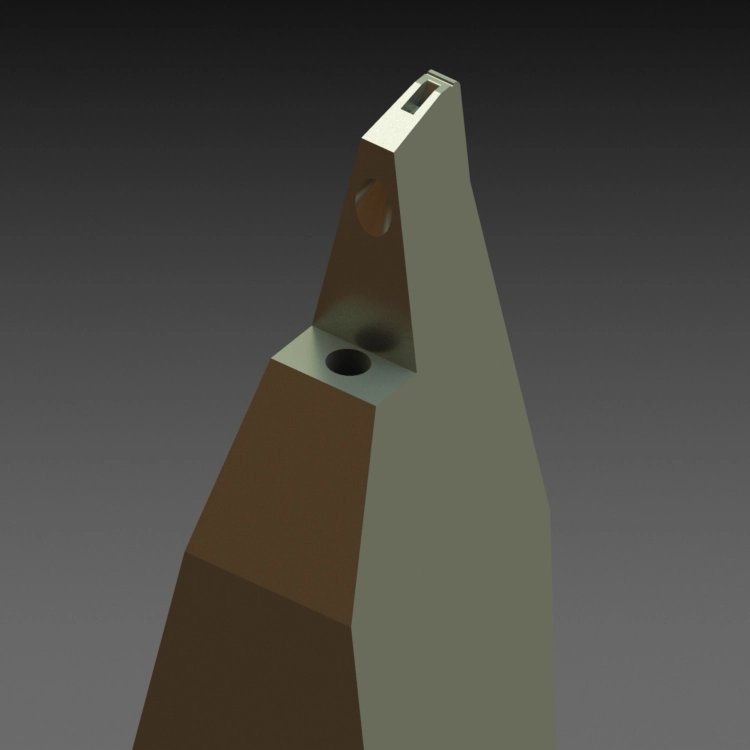What is wire bonding?
Basic introduction to wire bonding
Wire bonding is an important process in the semiconductor packaging process. It uses heat, pressure, and ultrasonic energy to tightly weld metal wires to substrate pads through bonding tools, thereby achieving electrical interconnection between chips and substrates, and information exchange between chips.
Wire bonding techniques
Ultrasonic bonding:
Use an ultrasonic (60~120KHz) generator to make the bonding tool vibrate horizontally and apply downward pressure at the same time. Under the action of these two forces, the bonding tool drives the lead to rub rapidly on the metal surface of the welding area, and the lead undergoes plastic deformation under the action of energy, and is closely contacted with the bonding area within 25ms to form a weld. It is commonly used for bonding aluminum wires. Both ends of the bonding point are wedge-shaped.
Thermocompression bonding:
Use pressure and heating to make the atoms on the contact surface of the metal wire and the welding area reach the atomic gravitational range, thereby achieving the purpose of bonding. The temperature of the substrate and the chip reaches about 150°C. It is commonly used for bonding of gold wires, one end is spherical and the other end is wedge-shaped.
Thermosonic bonding:
Used for bonding of Au and Cu wires. It also uses ultrasonic energy, but the difference from ultrasound is that an external heat source must be provided during bonding, and the bonding wire does not need to be abraded to remove the surface oxide layer. The purpose of external heat is to activate the energy level of the material, promote the effective connection of the two metals and the diffusion and growth of intermetallic compounds.
Wire bonding types are divided into ball bonding and wedge bonding
Advantages of ball bonding:
Applicable to micro-package: Ball bonding is suitable for micro-package and chip-level package, and can achieve very small size welding.
Low power consumption: During the welding process of ball bonding, less energy is transferred, so the power consumption is relatively low.
Applicable to gold wire welding: Ball bonding usually uses gold wire for welding, and gold wire has good conductivity and reliability.
Disadvantages of ball bonding:
High cost: Ball bonding equipment and material costs are high, so the relative cost is high.
More restrictions: Ball bonding has certain restrictions on the materials and structures of chips and packaging substrates, and is not suitable for all types of packaging.
First and second bonding points of ball bonding:

Advantages of wedge bonding:
Applicable to power devices: Wedge bonding is suitable for power devices and some special packages, and can withstand large currents and powers.
Low cost: Compared with ball bonding, the cost of wedge bonding equipment and materials is lower.
Wide application range: Wedge bonding has relatively loose requirements on the materials and structures of chips and package substrates, and has a wide range of applications.
Disadvantages of wedge bonding:
Size limitation: Wedge bonding usually cannot achieve micro packaging, and there are certain restrictions on the welding size.
High energy consumption: Wedge bonding transfers more energy during the welding process, so the power consumption is relatively high.
First and second bonding points of wedge bonding:

Application of wire bonding
Wire bonding technology is widely used in the electronics manufacturing industry, especially in the packaging process of integrated circuits, sensors, microprocessors and other microelectronic devices. The following are some of the main applications of wire bonding technology:
Integrated circuit (IC) packaging: Wire bonding is one of the key processes of integrated circuit packaging. It is used to connect the pins on the chip with the leads on the packaging substrate to realize the connection between the chip and the external circuit. This packaging method can meet the requirements of small size and stable performance, so it is widely used in various types of integrated circuits.
Sensor manufacturing: Many sensors, such as pressure sensors, temperature sensors, optical sensors, etc., require wire bonding technology to connect the chip and the packaging substrate to realize signal acquisition and transmission. Wire bonding can ensure the stability and sensitivity of the sensor, so it is widely used in sensor manufacturing.
Microprocessor packaging: The microprocessor is the core component in the electronic device. Wire bonding technology is used to connect the microprocessor chip with the packaging substrate to realize signal processing and control. Wire bonding can ensure the stability and reliability of the microprocessor, so it is widely used in microprocessor packaging.
LED packaging: In LED (light-emitting diode) manufacturing, wire bonding technology is used to connect LED chips to the packaging substrate to achieve current input and light signal output. Wire bonding can ensure the brightness and stability of LEDs, so it is widely used in LED packaging.
Hybrid Integrated Circuits: Hybrid integrated circuits are usually composed of multiple different types of devices. Wire bonding technology is used to connect these devices together to achieve functional integration and collaborative work. Wire bonding plays an important role in hybrid integrated circuit manufacturing.
In general, wire bonding technology has important applications in the packaging process of various microelectronic devices. It can ensure the stability, reliability and performance of the devices and promote the development and application of microelectronic devices.
Thank you for your browsing. If you want to know more about wire bonding tools, please contact us immediately!











